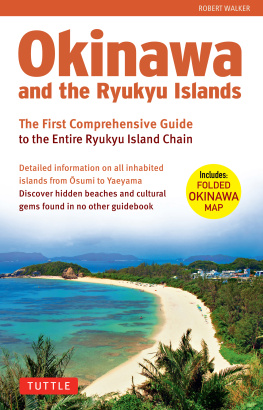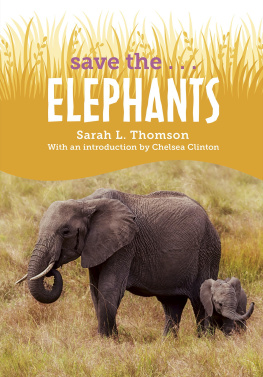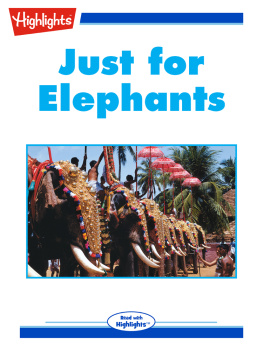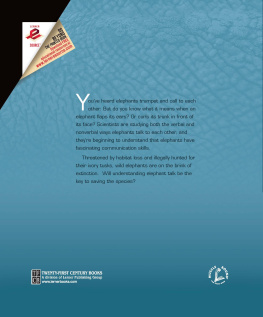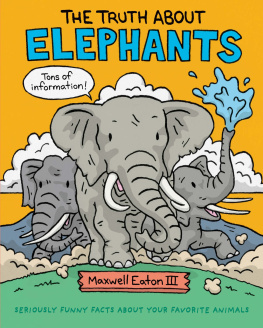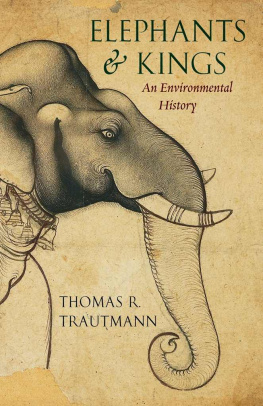IVORYS GHOSTS
Also by John Frederick Walker
A Certain Curve of Horn: The Hundred-Year
Quest for the Giant Sable Antelope of Angola
I VORYS G HOSTS
T HE W HITE G OLD OF H ISTORY AND THE F ATE OF E LEPHANTS
J OHN F REDERICK W ALKER

Copyright 2009 by John Frederick Walker
All rights reserved. No part of this book may be reproduced in any form or by any electronic or mechanical means, or the facilitation thereof, including information storage and retrieval systems, without permission in writing from the publisher, except by a reviewer, who may quote brief passages in a review. Any members of educational institutions wishing to photocopy part or all of the work for classroom use, or publishers who would like to obtain permission to include the work in an anthology, should send their inquiries to Grove/Atlantic, Inc., 841 Broadway, New York, NY 10003.
Published simultaneously in Canada
Printed in the United States of America
eBook ISBN-13: 978-1-5558-4913-9
Atlantic Monthly Press
an imprint of Grove/Atlantic, Inc.
841 Broadway
New York, NY 10003
Distributed by Publishers Group West
www.groveatlantic.com
for Elin
C ONTENTS
P ART 1
S HAPES IN T USKS
P ROLOGUE : 1898
An African slave belonging to Shundi, the Kavirondo ivory trader and dealer in human chattel, killed the ancient elephant on the slopes of Mount Kilimanjaro. That much is certain.
Shundis slave was a Chagga tracker, and when he came across the elephants trail he knew the impressive footprintseach two hand spans across in the soft earthhad been left by a large bull. The crumbled dung piles of half-digested forage spoke of the worn molars of a mzay, an old one, weary and slow-moving, the kind that often carried good ivory. Shundi would want to know if that was so. The Chagga slipped quietly through the sparse bush and kept the wind in his face.
Not long after he found dung mounds still warm to a probing finger, he spotted the bulls gray bulk, humped like the shadow of a hill in the growing dusk. From bush to tree to bush and back again the Chagga drew close and saw how wizened with age the elephant was, his back sloping like a hyenas to his hindquarters, the withered hide sagging over his knees, his temples deep, dark hollows. In this shrunken state his thick tusks, which swept all the way to the ground, looked enormous. The old one swung his trunk listlessly at the grass and ripped up a clump, then paused as if trying to remember something before raising it slowly to his mouth.
As the sinking sun gilded Kilimanjaros snowcap, the tracker took the one chance he had left in the dying light. Fumbling with his muzzleloader, he clicked back the hammer and pointed the shaking barrel at the bulls turning head just as its ears flared to fix the sound. At the shattering blast, dust spurted in a jet off his forehead, monkeys and birds shrieking as he turned rigid, trunk flung up in a questioning curl. The Chagga dropped his smoking weapon and ran in a lather of terror, feet racing over the grass, daring to slow only when no trumpeting scream rang out to signal doom about to overtake him.
No one really knows how the elephant fell. Had he been shot in the chest he might have stumbled for a mile or more before crashing to earth in a final exhalation, legs bent as if trying to swim sideways. If the thumb-sized lump of lead had punched through the skull he might simply have collapsed where he stood. Then the old one would have sunk back on his hindquarters as his head dropped, burying the tusk points in the earth and assuming the posture of a sphinx; the heavy brow would have been propped high by the ivory posts, trunk flopped lifelessly between.
The slave, heaving for breath and slick with sweat, surely must have been sick with fear for leaving behind a firearm doubtless more valuable to his master than his own miserable self before reaching camp and flinging himself at the feet of Shundi to gasp his tale. We know that the next morning he led Shundi and his men back to the slopes of the mountain where the ancient elephant lay, watched by vultures waiting in the branches of nearby trees for other scavengers to breach the tough hide. Over the next several hours the men chopped at the head with hand axes to free the two tusks, supreme examples of the great natural treasure that had been sought since ancient times. Shundi had the thick white crescents carried to the coast by slaves staggering under their weight and transported by dhow to the ivory market of Zanzibar.
The year was 1898. Photography had come to Africa by then, and a formal portrait was taken of the immense pair of tusks, posed together in a tall ornately carved doorway in Zanzibar Citys old quarter. Two Africans in fezzes and white tunics steady the upright curving columns of ivory that tower over them, their tips turned outward in an enticing splay implying the continents extravagant and seemingly inexhaustible riches. They would come to be known as the Kilimanjaro tusks and remain to this day the largest pair ever recorded. Their size makes it difficult to think of them as elephant teeth but that is what they were. The bigger one weighed 236 pounds; the other 228. Each was more than ten feet long and as thick as a mans thigh.
From their tips, worn smooth from ripping tree bark and gouging water holes, to the thin, chipped edges of the deeply hollowed bases that once held each tusks nerve pulp, a palimpsest of stains, nicks, and fissures told of a long life in the bush. All this long-burnished, mysterious braille would have felt cool to the hand, even in the African climate, for ivory absorbs sweat.
The carved doorway where the tusks were photographed was the entrance to Nyumba PembiIvory Housea high-walled American compound that housed in its courtyard a giant scale for the weighing of elephant teeth. Over the years, many who shaped Africas colonial history walked through those doors: explorers and adventurers, including Richard Burton, John Speke, and Henry Morton Stanley, the infamous slaver Tippu Tip, Arab traders, Indian merchants, and a succession of American consuls who helped secure the lucrative trade. There, the agent for Arnold Cheney and Company, the powerful New York ivory importing firm, purchased the Kilimanjaro tusks for 1,000 sterlingalmost $5,000then the highest sum ever paid for a pair of tusks.
This photograph is worth study. It sums up not just a moment at the end of the nineteenth century but a cusp in the time line of this seductive substance that is apparent to us only now. The proud door of Ivory House was the gateway for much of the global trade in elephant tusks at the time; Zanzibar was the central market and Americans dominated the business. Millennia of commerce in white gold had come and gone before these tusks made their appearance, and prior to the twentieth century there was little talk of dwindling elephant herds affecting the supply of ivory.
We now know that the photograph was taken just before the apex of the long and troubled history of the worldwide desire for this uniquely sensuous material, a desire fanned by its availability. The ivory tradedespite the human cruelty and animal slaughter required to satisfy itmade that possible. In 1898 none foresaw that less than a century later the appetite of uncontrolled commerce would threaten to consume the bulk of the remaining sub-Saharan herds that supplied it; back then, elephants in the yet to be exhausted interior were said to be as thick as flies.
Next page



